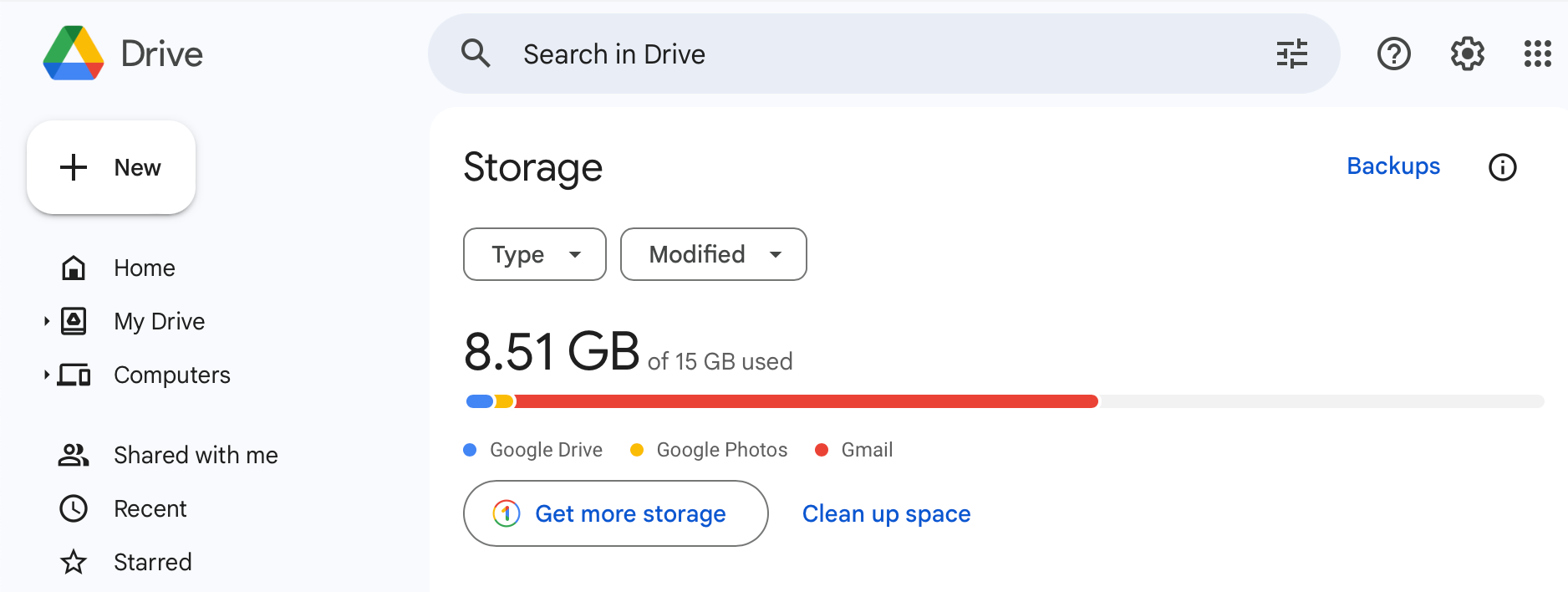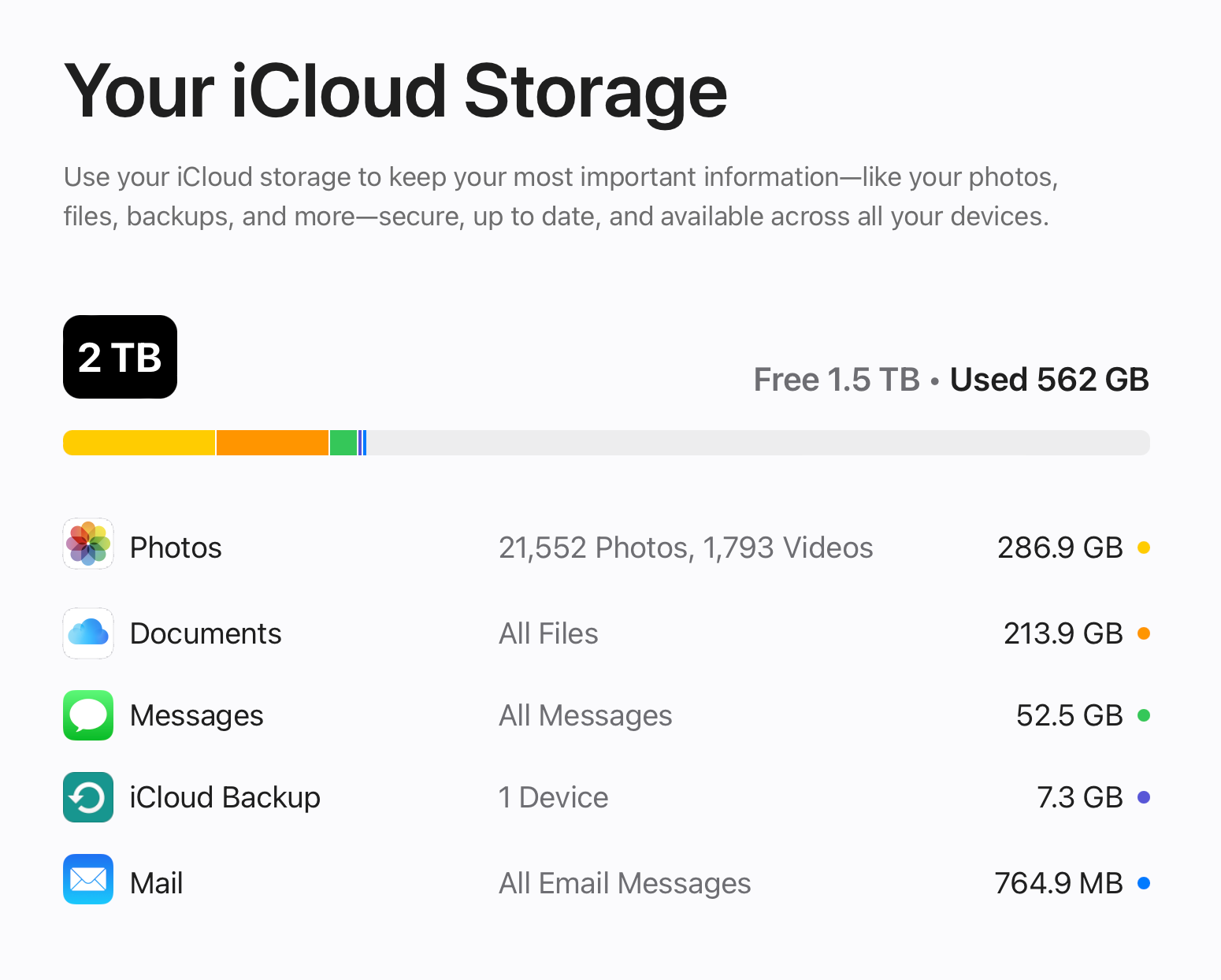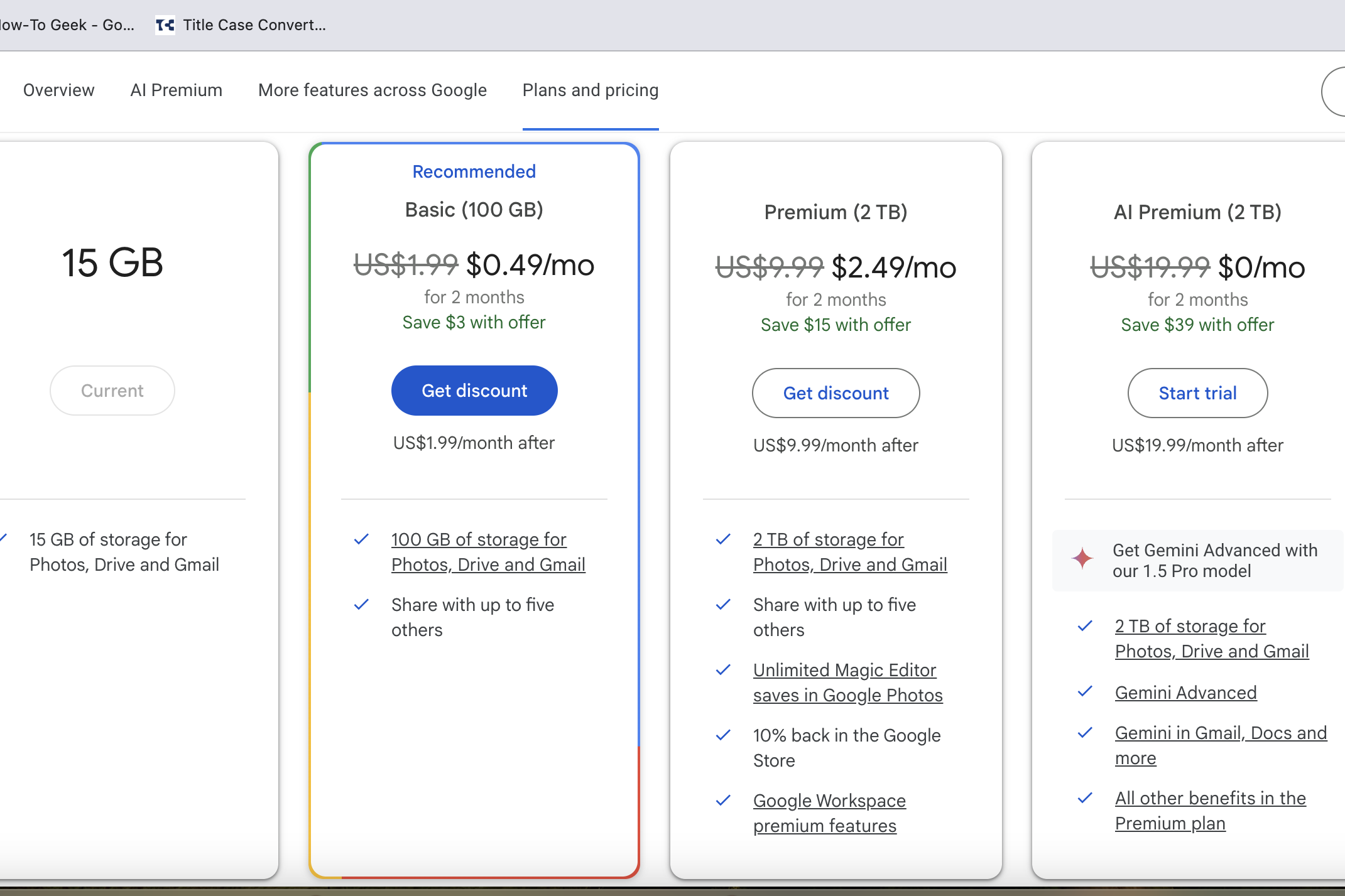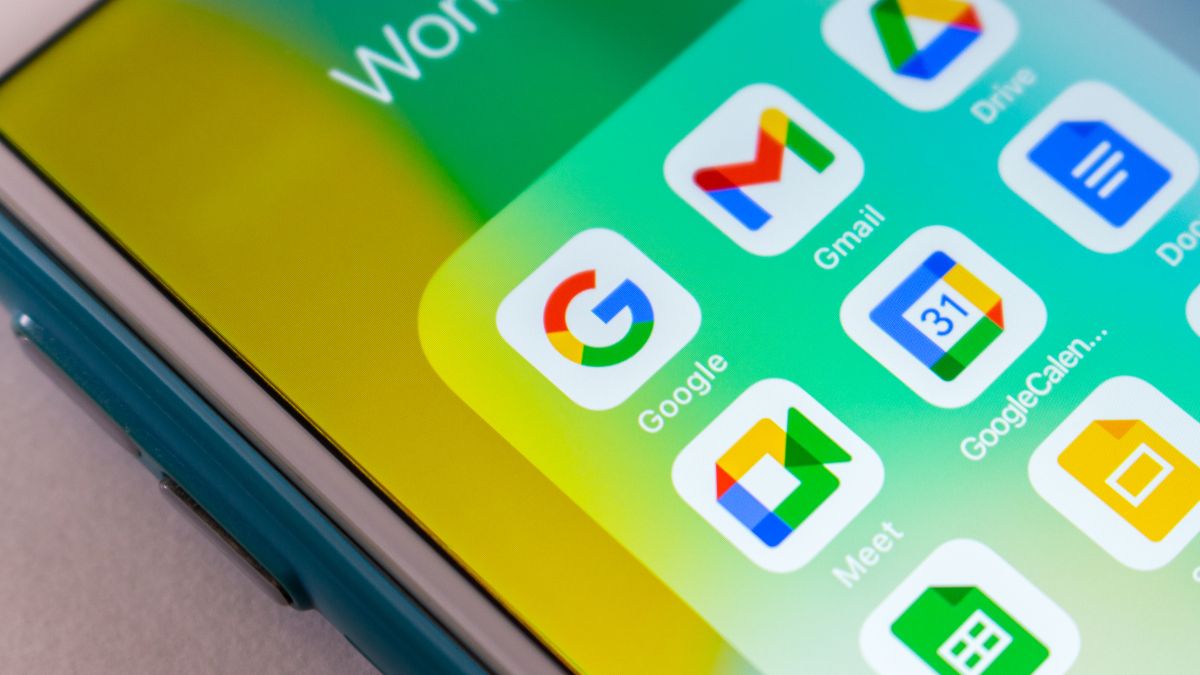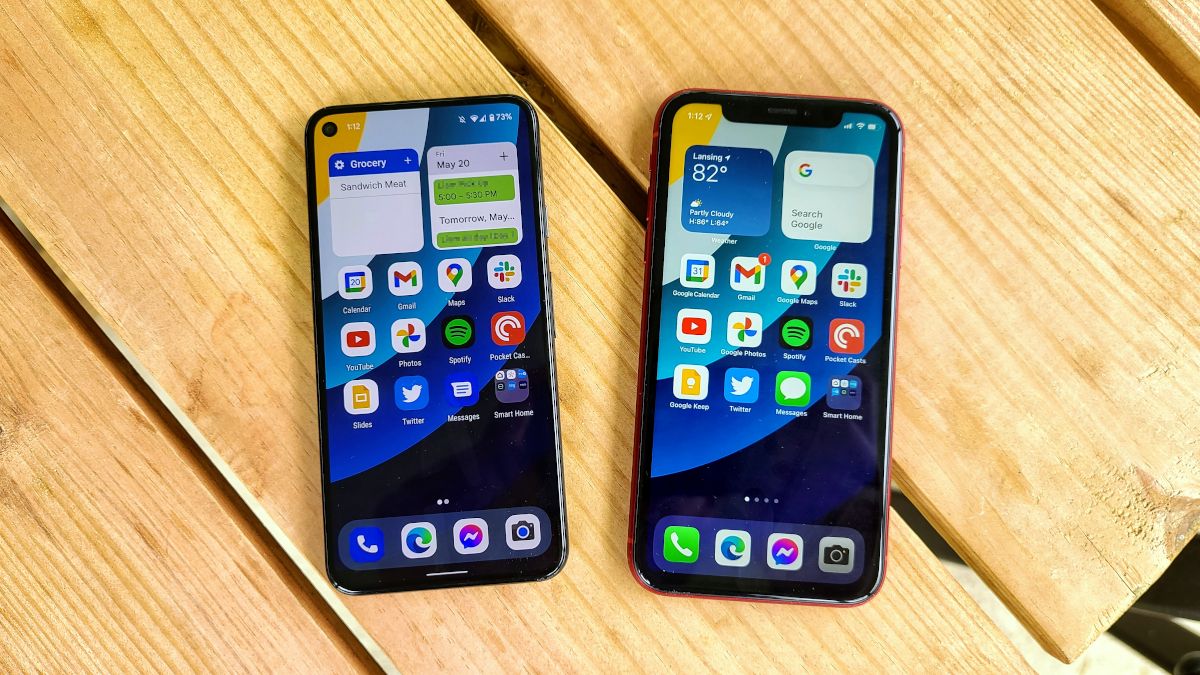Key Takeaways
- Google Drive offers 10GB more free cloud storage than iCloud, totaling 15GB.
- Google offers similar pricing to iCloud, but is more likely to offer discounted rates.
- Google Drive is more versatile across devices, while iCloud is the only service that supports restoring data directly to iPhones, iPads, and Apple wearables.
Paying for iCloud means having extra space to store media and files, but is it cost-effective? Not exactly. Aside from cheaper cloud storage subscription plans, Google Drive brings more to the table and might just be the right fit for you.
Google Offers More Free Storage
Google Drive gives you 10GB more free cloud storage (at 15GB) than Apple does with iCloud (at only 5GB). So, if you get a lot of annoying system notifications prompting you to upgrade your free 5GB iCloud storage and you’re not looking to pay for anything yet, consider backing up your files, photos, and videos on Google Drive’s free 15GB cloud storage space.
You can also get the best of both worlds by using both free plans from Google Drive and iCloud. There’s nothing stopping you from using as many cloud storage services as you want on your iPhone. That means you’ve got a total of 20GB of free cloud storage. At least for now.
This way, you can easily back up your pictures and videos on iCloud, as it’s much easier to handle and syncs automatically. Then, you can easily upload your files and documents to Google Drive and access them whenever you want. It’s just as simple as storing your files on iCloud.
The big drawback here is that you’ll need to consciously manage this storage. Turning on iCloud Photo Library under Settings > iCloud will handle media uploads, but you’ll need to have the Google Drive app installed to use Google’s storage instead.
Fortunately, Apple’s Files app integrates with a good number of third-party cloud storage services (turn them on using the “…” button on the Browse tab).
Prices Between the Services Are Comparable
iCloud’s paid plans are quite pricey compared to other cloud storage providers like Google Drive. You might be surprised to learn that the iCloud subscription pricing differs across regions.
If you live in any of the South, North, and Latin America regions, you’ll basically spend less money on iCloud than someone else in Europe, Asia, or Africa. On the other hand, Google Drive offers consistent pricing worldwide. Google also offers fewer plans than Apple.
iCloud storage plans come in four different sizes. You could opt for any of the 50GB, 200GB, 2GB, 6TB, and 12TB packages. Google Drive, on the other hand, provides fewer packages. A basic 100GB plan, a 200GB premium package, and a 2TB plan. There’s also a 2TB plan that comes bundled with Gemini Advanced.
If you live in the US, the pricing from both providers is pretty much the same. iCloud’s 50GB plan costs $0.99/month, while Google Drive’s 100GB plan costs $1.99/month. On the larger side, Google Drive’s 2TB plan (without Gemini Advanced) costs $9.99/month, just as iCloud’s 2TB plan costs $9.99/month.
While we can easily say iCloud provides more storage options so it’s better, it’s not that simple. First, Google Drive sometimes offers discounts on its cloud storage plans that could save you some money, something Apple never does. We’re looking at savings from $3 to $39 on their plans at the time of writing.
Also, don’t forget that iCloud pricing differs across regions. If you live in any of the European, Asian, or African countries, you could be paying twice as much as someone in the US for the same iCloud storage plan. It could also be argued that the value is greater since you can do more with Google Drive storage (more on this later).
Automatically Back Up iPhone Photos to Google Drive
Once you take a picture or record a video on your iPhone, it automatically backs up to iCloud once you’re connected to the internet, but with Google Drive, the process isn’t necessarily automatic. Basically, you have to manually upload whatever media you wish to back up using the Google Drive app.
Not everyone has the time to manually back up their photos and videos every time, so this might be a bit of a drawback for Google Drive. The good news, however, is that you can set up an automatic media backup by installing the Google Photos app.
Google Photos works just like the Photos app on iPhone, storing your pictures and videos. To get started, simply enable the “Back up & sync” setting under “Google Photos settings” within the Google Photos app. You can open the app at any time and check to see whether your media library has been backed up, or manually initiate a sync.
Google Workspace Syncs Better with Google Drive
If you frequently use Google Sheets, Docs, and other Google Workspace services, Google Drive integrates perfectly. It syncs all your files automatically if you use the same email account across these services.
Once your email is connected to Google Workspace services and the same email is linked to your Google Drive, any document, sheet, file, and image shared with you will automatically sync with your Google Drive. It’s a one-stop shop for all your work-related files.
On iCloud, however, you’d have to manually upload files you work on unless you’re creating them with apps that specifically use iCloud as a storage medium. It’s no tough job, but automatic backups and syncs simply make life much easier.
Only iCloud Supports Restore from Backup on iPhones
If you ever lose or replace your iPhone, or decide to reset your iPhone to factory settings and want to keep your phone data and information, iCloud backup is superior since the iPhone doesn’t support restoring from other storage providers.
You could also manually backup to iTunes, but you’d have to remember to do this regularly. Only iCloud can be used as a last line of defense for restoring all data and information on your iPhone. Google Drive, while useful, falls short here. It can only restore your photos, videos, calendar events, and contacts, not the full iPhone experience.
The same goes for the Apple Watch and iPad. Your health and fitness data, customized watch faces, drawings, notifications settings, even your bookmarks on Safari—all of it can be restored back on your Apple Watch and iPad with iCloud.
Google Drive Works Better Across Multiple Devices
Google Drive is a more versatile option if you use a mix of devices, like an iPhone, a Windows PC and an Android tablet. It’s difficult to share files from Android to iCloud, though Windows support has improved over the years. Google Drive makes more sense for users who aren’t fully engrossed in the Apple ecosystem.
The storage you buy through Google could be more useful to you if you use a lot of non-Apple devices.
Is the Switch to Google Drive Worth It?
At the end of the day, choosing between iCloud and Google Drive is all about what works best for you. When considering things like price, free storage space, and workspace sync ease, Google Drive puts up a good fight against iCloud.
On the other hand, because iCloud is native to iPhones and the Apple ecosystem, it makes life easy to some extent. If you back up your iPhone and other Apple devices regularly, you’d never have to worry about losing your app data, files, information, photos, videos—basically, everything.
And if you need just a little bit more space, there’s no harm in using both iCloud and Google Drive free storage plans. You get the best of both worlds without spending a dime.
If you’re looking for a one-stop shop to back up all your data and information, it’s better to go with iCloud. While paid iCloud plans will cost you, the peace of mind is totally worth it.


